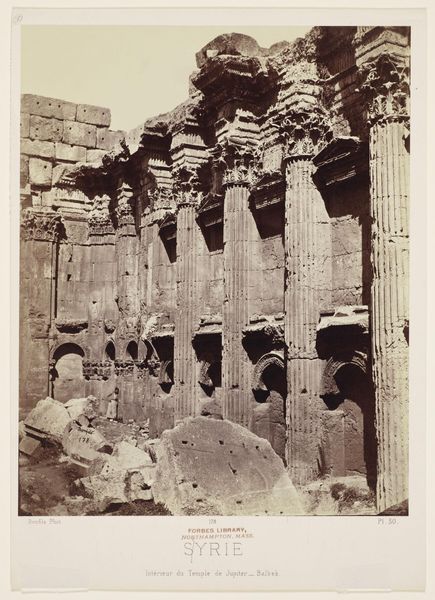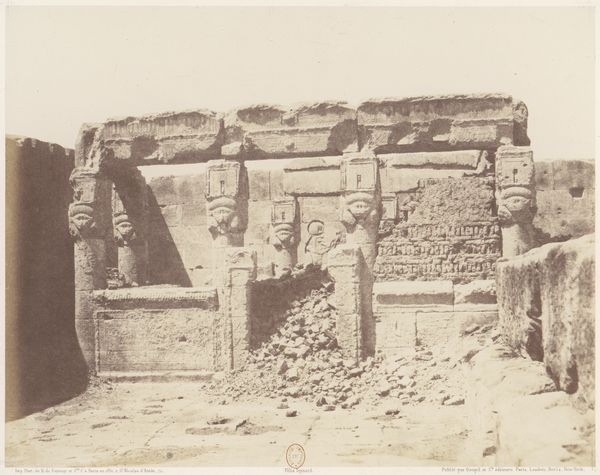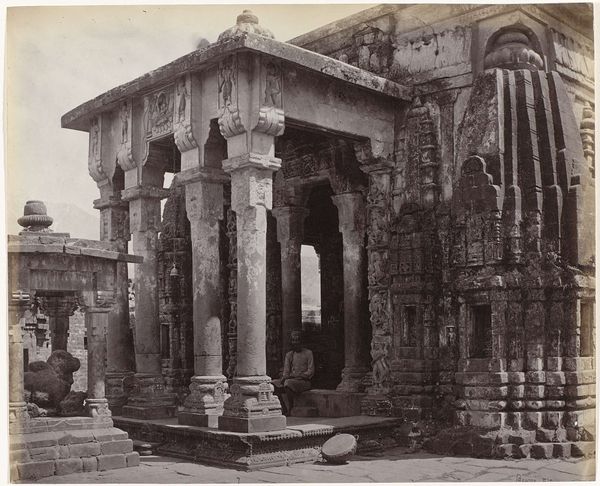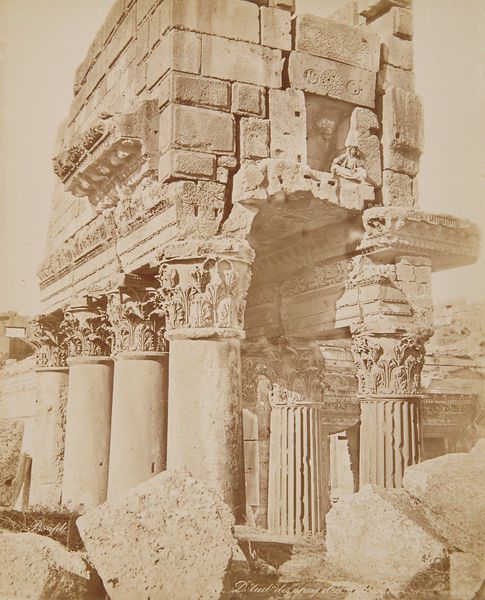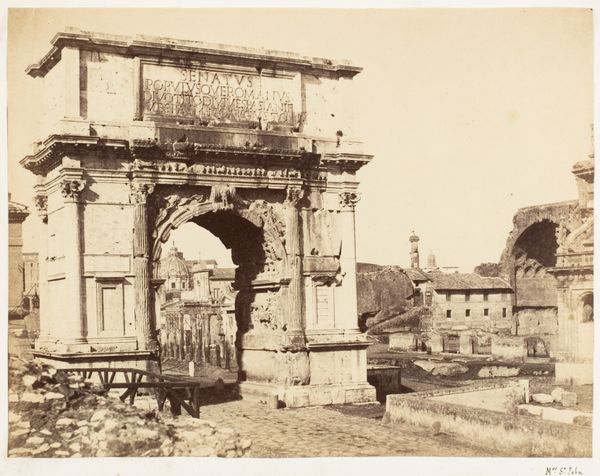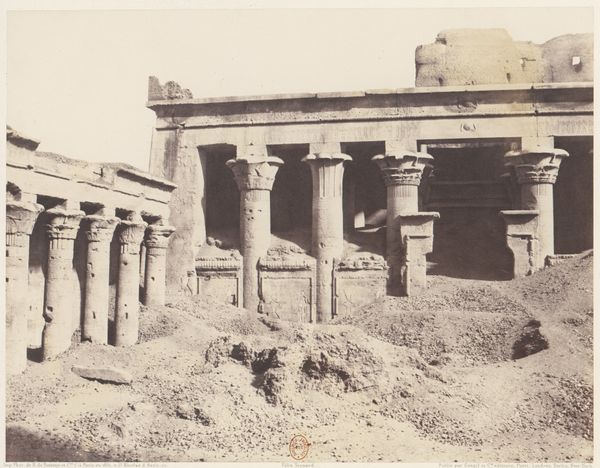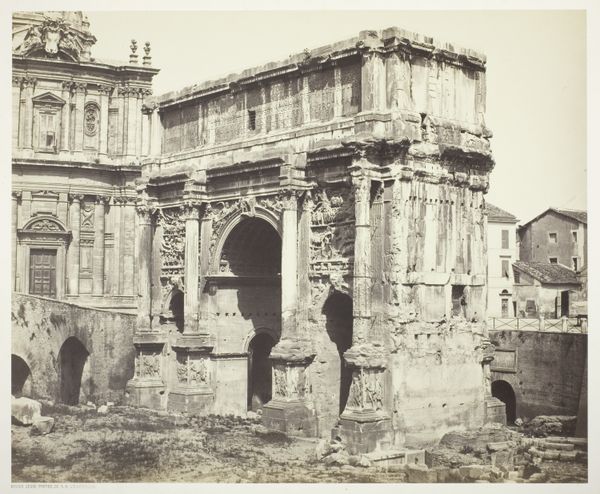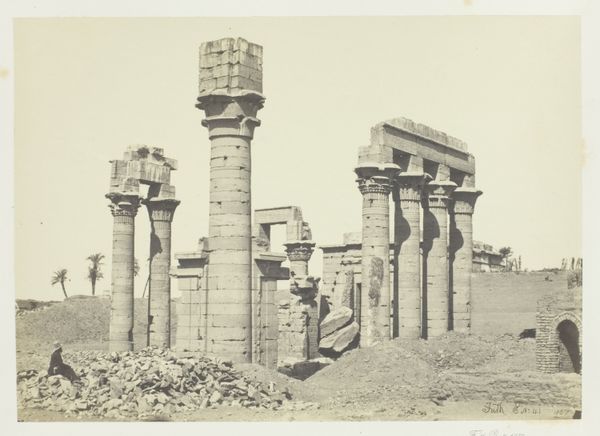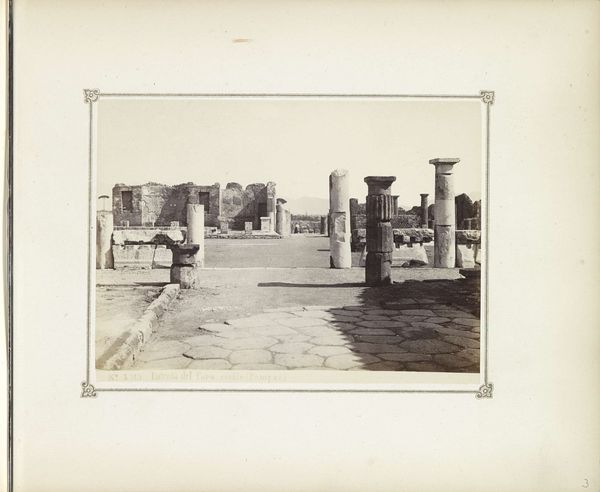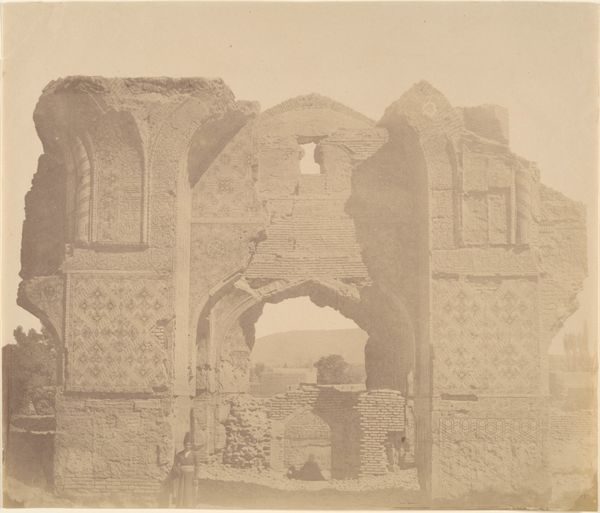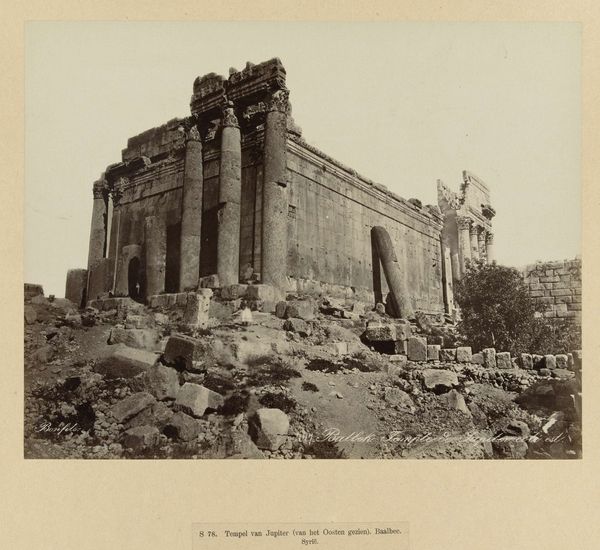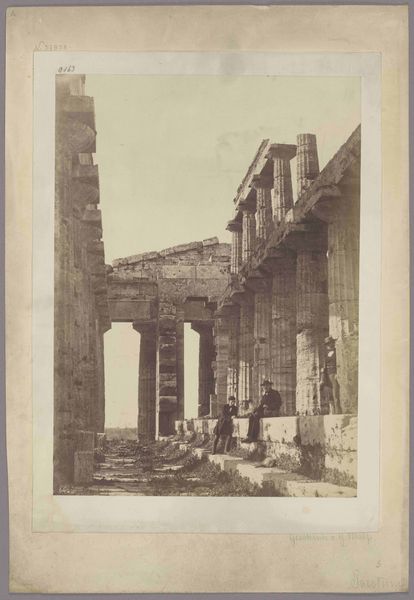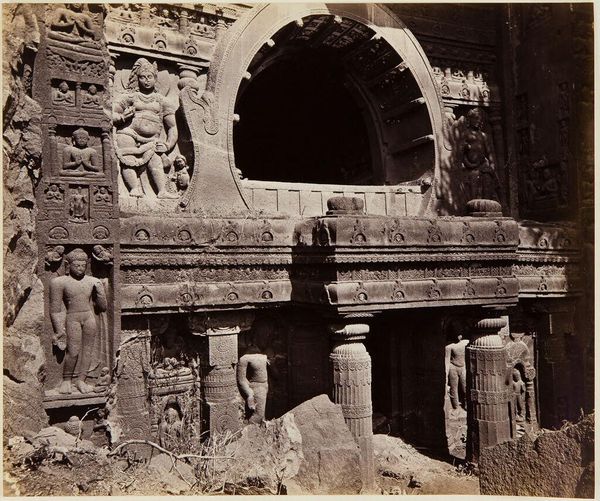
#
aged paper
#
toned paper
#
muted colour palette
#
photo restoration
#
nude colour palette
#
19th century
#
watercolour bleed
#
watercolour illustration
#
pencil art
#
watercolor
Dimensions: height 222 mm, width 288 mm, height 323 mm, width 265 mm
Copyright: Rijks Museum: Open Domain
Félix Bonfils made this photograph of Roman ruins in Baalbek, Lebanon, using the albumen process, a popular photographic technique of the time. The albumen print, created using egg whites to bind the image to paper, results in a smooth surface and fine details, which you can see in the intricate carvings of the ruins. This process required careful preparation and skill, and the final print depended heavily on the photographer's ability to manage light and chemistry. Bonfils's choice of this medium speaks to the intersection of science and craft in the 19th century, a period where photography was both a means of documentation and artistic expression. Moreover, the act of photographing these ruins, packaging, and selling them speaks to the rise of tourism and the commodification of culture. The labor involved in producing these prints – from mixing chemicals to the printing process – often went unacknowledged. By focusing on process, we see how photography, like any other creative endeavor, is deeply embedded in social and economic contexts.
Comments
No comments
Be the first to comment and join the conversation on the ultimate creative platform.
